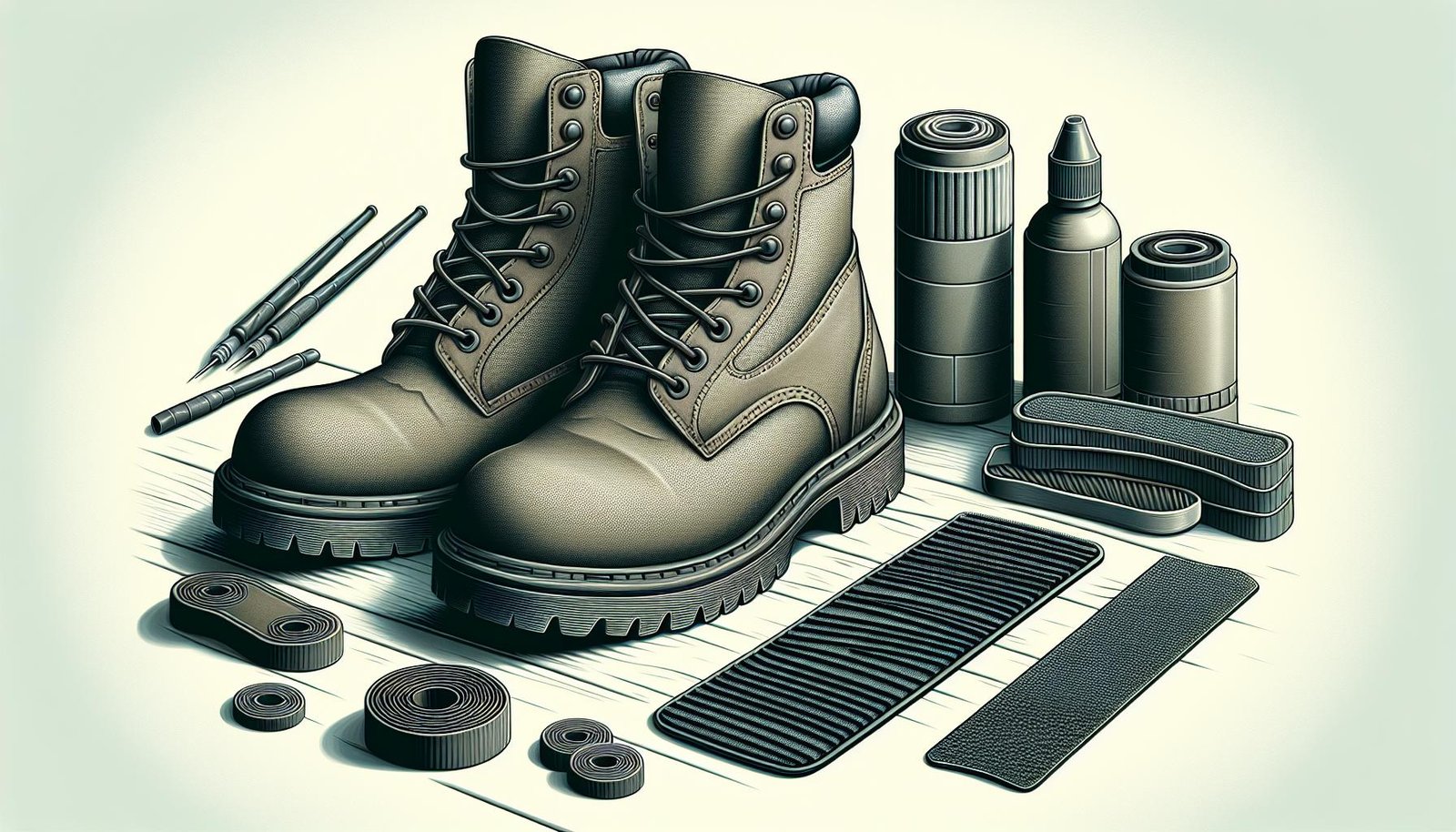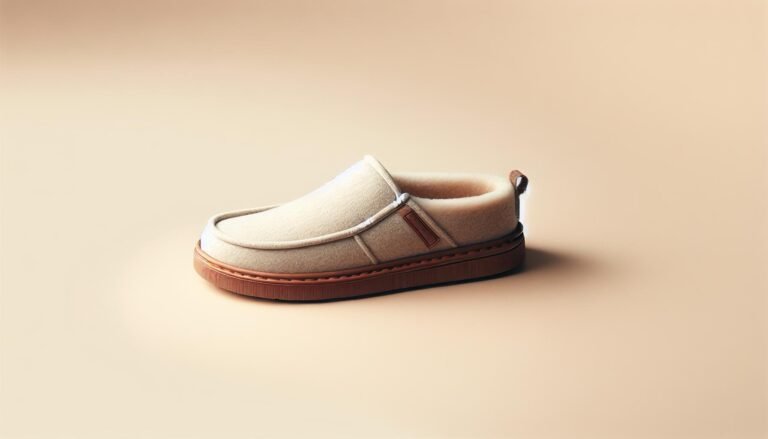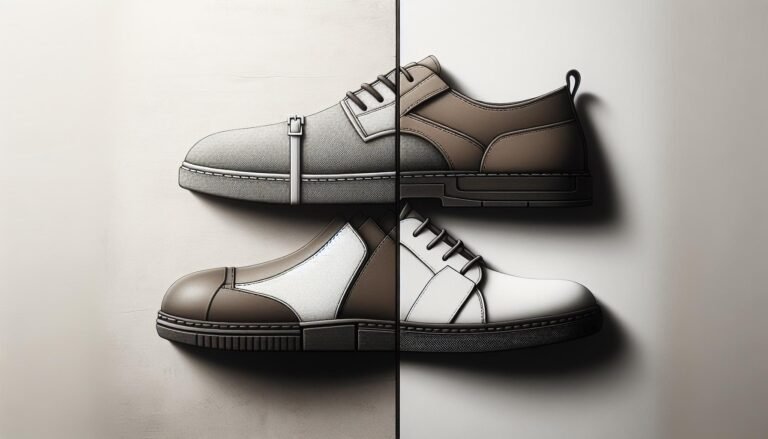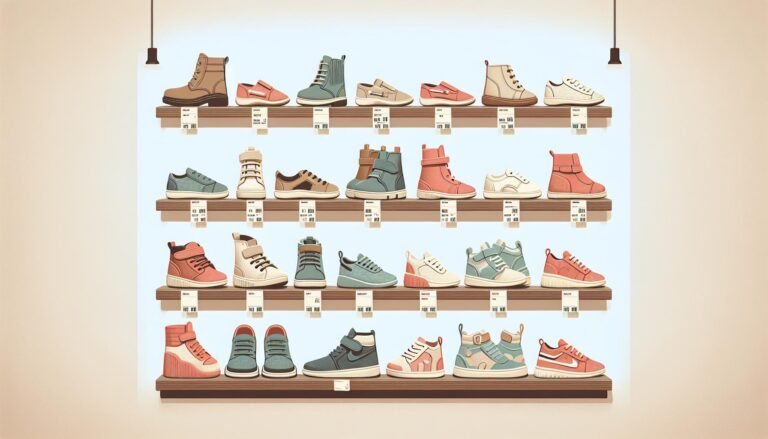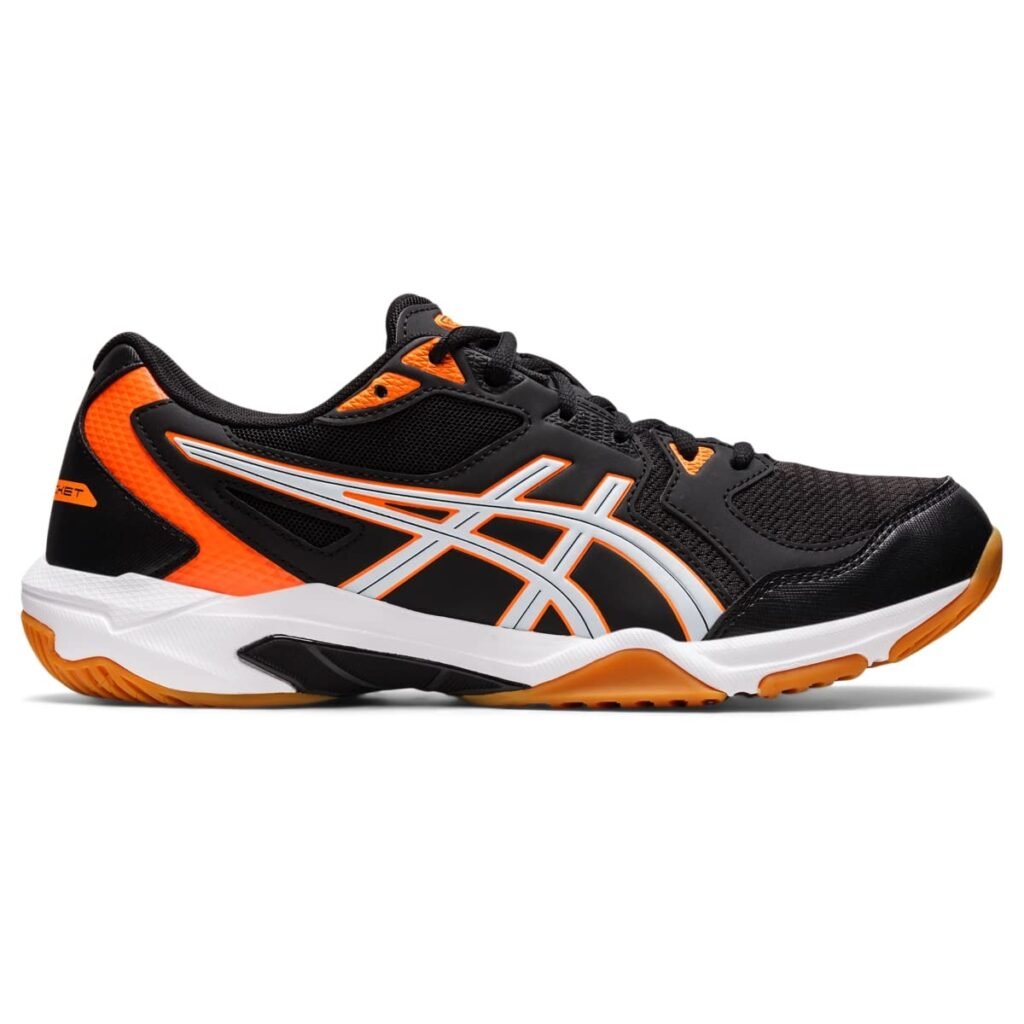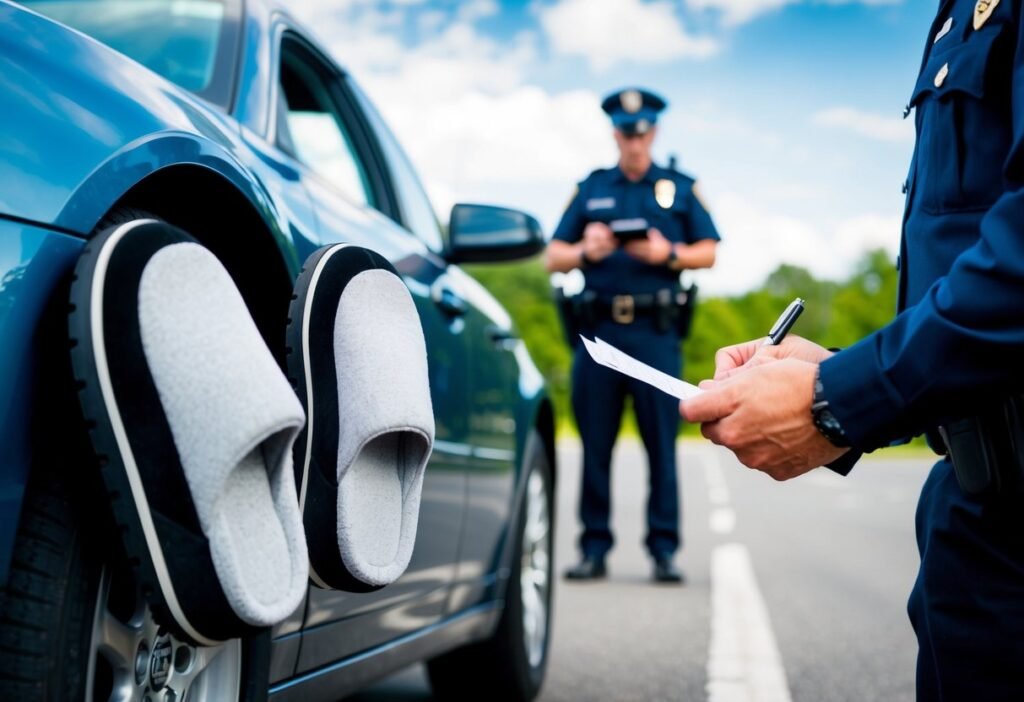How to Make Slippery Shoes Non-Slip: Expert Tips for Better Traction
Slippery shoes can turn a simple walk into a dangerous ordeal. Whether it’s a sleek pair of dress shoes or your favorite sneakers, losing traction can lead to slips and falls. Fortunately, transforming those slick soles into non-slip wonders is easier than you might think.
From quick DIY hacks to specialized products, several methods can enhance your shoe’s grip. This guide will explore practical solutions to keep you steady on your feet, ensuring safety without sacrificing style.
Key Takeaways
- Understanding Causes and Risks: Slippery soles result from smooth materials, wet or oily surfaces, and wear over time, increasing the risk of falls and injuries.
- DIY Remedies: Scuffing soles with rough surfaces or using sandpaper can enhance grip by creating a rougher texture.
- Adhesive Methods: Applying adhesive pads, grip tape, or anti-slip sprays can provide quick and effective non-slip solutions.
- Commercial Products: Sole grips and spray-on coatings offer durable and versatile options for improving shoe traction.
- Professional Services: Shoe repair services and custom non-slip solutions offer tailored approaches for lasting results.
- Maintenance Tips: Regular cleaning, inspecting soles, reapplying grip pads, and using non-slip sprays help maintain non-slip properties over time.
Understanding Slippery Shoes
Causes of Slippery Soles
Slippery soles originate from various factors, impacting the shoe’s grip on surfaces. Smooth sole materials, such as leather and plastic, contribute to a lack of traction. Shoes worn on wet, oily, or smooth floors can exacerbate these conditions. Wear and tear over time make soles less effective in providing grip. Finally, manufacturing defects or design choices, like poor tread patterns, also lead to slipperiness.
Risks of Wearing Slippery Shoes
Wearing slippery shoes increases the likelihood of slips and falls, leading to potential injuries. For instance, hospitals see a substantial number of injuries related to falls. Reduced stability translates to higher chances of accidental damage, especially in icy or wet conditions. Moreover, certain professions, like those in construction or the food industry, face greater risks when employees wear shoes with poor traction. This increase in accidents affects both personal health and workplace safety records.
Effective Home Remedies to Make Shoes Non-Slip

Scuffing the Soles
Scuffing the soles improves traction by creating a rougher surface. Rub the bottoms of the shoes against rough concrete or gravel. Ensure uniform scuffing on all parts of the sole to maximize grip. This method reduces the smoothness of new or worn-out shoe soles effectively.
Using a Sandpaper
Using sandpaper increases shoe sole friction by adding texture. Select coarse-grit sandpaper (40-60 grit) for optimal results. Gently rub sandpaper on the flat areas of the sole. Avoid excessive pressure to prevent damage. Focus on worn or smooth sections for the best improvement.
Adhesive Methods
Adhesive methods enhance shoe grip using specific materials. Apply adhesive pads, grip tape, or anti-slip sprays designed for shoes. Adhesive pads stick directly to the sole, offering a quick solution. Grip tape provides a durable, rough surface. Anti-slip sprays, when applied evenly, create a textured layer on the sole. Choose the method suited to the shoe type and activity for long-lasting results.
Commercial Products for Non-Slip Shoes

Sole Grips and Treads
Sole grips and treads attach to the shoe’s bottom to increase friction. These products, available in various sizes, stick directly to the sole. Made from rubber or silicone, sole grips offer durable solutions. For example, Stick-on Rubber Soles and Anti-Slip Shoe Pads can improve traction. Users should ensure the adhesive is strong for extended use. Cleaning the shoe’s surface before application helps improve adhesion.
Spray-on Coatings
Spray-on coatings provide a versatile option for enhancing shoe grip. These sprays contain a textured formula that adheres to the sole. Products like Bare Ground SlipGrip and Krylon Non-Skid Coating offer easy application. Users spray the product evenly across the sole for uniform coverage. Waiting for the coating to dry completely ensures effectiveness. Multiple layers can be applied if needed, with each layer adding additional grip. Debugging the issue of slipperiness through coatings extends the lifespan of a shoe’s non-slip properties.
Professional Solutions for Slippery Shoes
Shoe Repair Services
Shoe repair services offer specialized solutions to make shoes non-slip. Skilled cobblers use high-quality materials to replace worn-out soles, ensuring better traction. They can also apply professional-grade grip pads to the shoe’s bottom, which significantly improves stability on slippery surfaces. For customized results, opting for professional repair ensures that the shoes maintain their original design and comfort while enhancing safety features.
Custom Non-Slip Solutions
Custom non-slip solutions involve tailored approaches based on shoe type and user needs. Many professionals offer personalized options like specially designed non-slip sole inserts made from rubber or silicone. These inserts fit precisely within the shoe, providing enhanced grip without altering the shoe’s appearance. Additionally, industries requiring specific safety standards, like hospitals or kitchens, benefit from specialized coatings applied by professionals. These coatings create a textured, anti-slip surface that withstands heavy use and maintains longevity, offering effective and durable results.
Prevention Tips for Maintaining Non-Slip Shoes

Maintaining non-slip shoes requires regular care. It’s essential for safety and to extend the shoe’s lifespan.
- Regular Cleaning:
Remove dirt and debris from the soles, using a brush or damp cloth. Clogged treads reduce traction, making shoes slippery. - Inspecting Soles:
Check soles for wear and tear. Replace damaged soles promptly to maintain their non-slip properties. - Reapplying Grip Pads:
Replace worn-out grip pads. High-traction pads are available at hardware stores and are easy to apply. - Using Non-Slip Sprays:
Apply non-slip sprays on the soles. These sprays create a textured surface, enhancing grip. - Avoiding Smooth Surfaces:
Minimize walking on polished or wet surfaces. These surfaces can prematurely wear out the non-slip properties. - Regular Rotation:
Rotate shoes to even out wear. Consistent use of one pair increases wear unevenly, diminishing grip. - Proper Storage:
Store shoes in a cool, dry place. Prolonged exposure to heat or moisture can degrade the sole material. - Quality Footwear Investment:
Invest in high-quality non-slip shoes. While premium options cost more initially, they offer sustained traction and durability.
Maintaining non-slip shoes improves safety, especially in environments where traction is crucial. Consistent upkeep can ensure long-lasting performance and minimize the risk of slips and falls.
Conclusion

Making slippery shoes non-slip is essential for personal safety and workplace efficiency. By understanding the root causes of reduced traction and implementing both DIY and professional solutions, anyone can significantly improve their shoe grip. Regular maintenance and investing in high-quality footwear are key to ensuring long-term safety. Whether it’s through custom inserts, professional-grade grip pads, or regular cleaning and inspections, taking proactive steps can prevent slips and falls. Prioritizing non-slip solutions not only enhances individual safety but also contributes to a safer environment for everyone.
Frequently Asked Questions
Why do shoes become slippery?
Shoes can become slippery due to worn-out soles, poor sole material, or design flaws. Over time, the wear and tear on soles reduce traction, increasing the risk of slips and falls.
What industries are most affected by slippery shoes?
Industries like construction and food service are most affected by slippery shoes due to the nature of their work environments, which often involve wet, greasy, or uneven surfaces.
How can I improve the grip on my shoes?
You can improve shoe grip by applying non-slip grip pads, using non-slip sprays, replacing worn-out soles, or opting for custom non-slip solutions like rubber or silicone inserts.
What are custom non-slip solutions for shoes?
Custom non-slip solutions involve tailored approaches such as non-slip sole inserts made from rubber or silicone and specialized coatings for industries with specific safety standards to create durable non-slip surfaces.
Are there professional services to fix slippery shoes?
Yes, professional services can fix slippery shoes by replacing worn-out soles with high-quality materials or applying professional-grade grip pads to enhance traction.
How often should I inspect my shoes for safety?
It’s advisable to inspect your shoes regularly, especially before starting work in environments where traction is crucial. Look for signs of wear and tear on the soles and take preventative measures as needed.
Can non-slip sprays help improve traction?
Yes, non-slip sprays can enhance grip and improve traction when applied to the soles of your shoes. They are a practical solution for temporary or immediate traction issues.
What maintenance tips can help maintain non-slip shoes?
To maintain non-slip shoes, clean them regularly, inspect soles for wear, reapply grip pads as needed, store them properly, avoid smooth surfaces, rotate shoes, and invest in high-quality footwear.
Why is it important to invest in high-quality footwear?
Investing in high-quality footwear ensures sustained traction and durability, which is essential for safety in environments where slips and falls are common. High-quality shoes typically have better materials and design features that improve traction.

